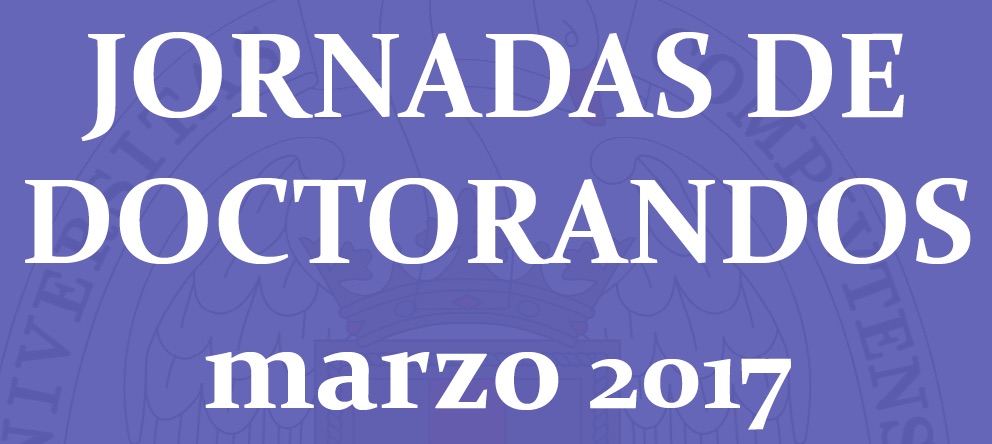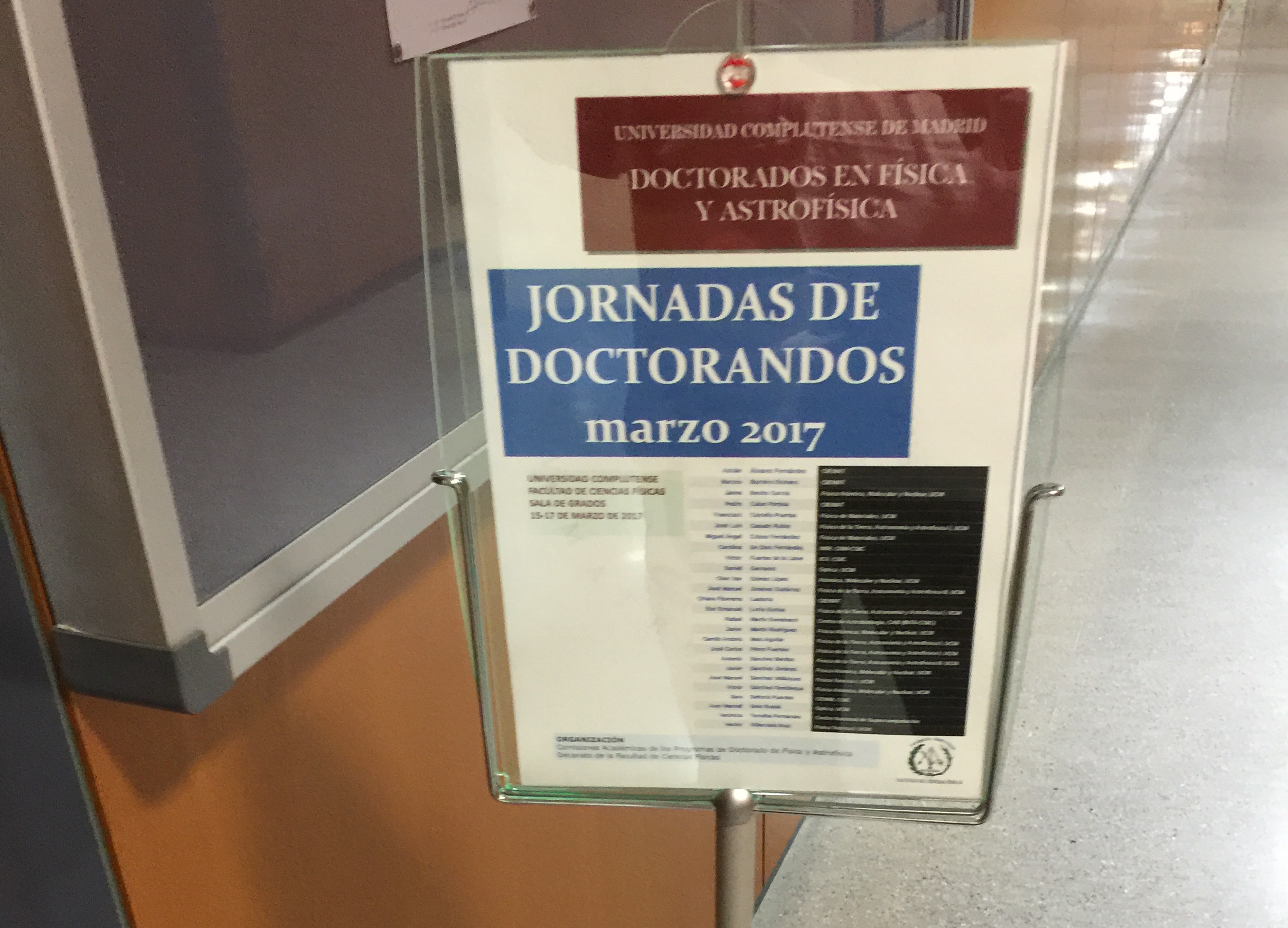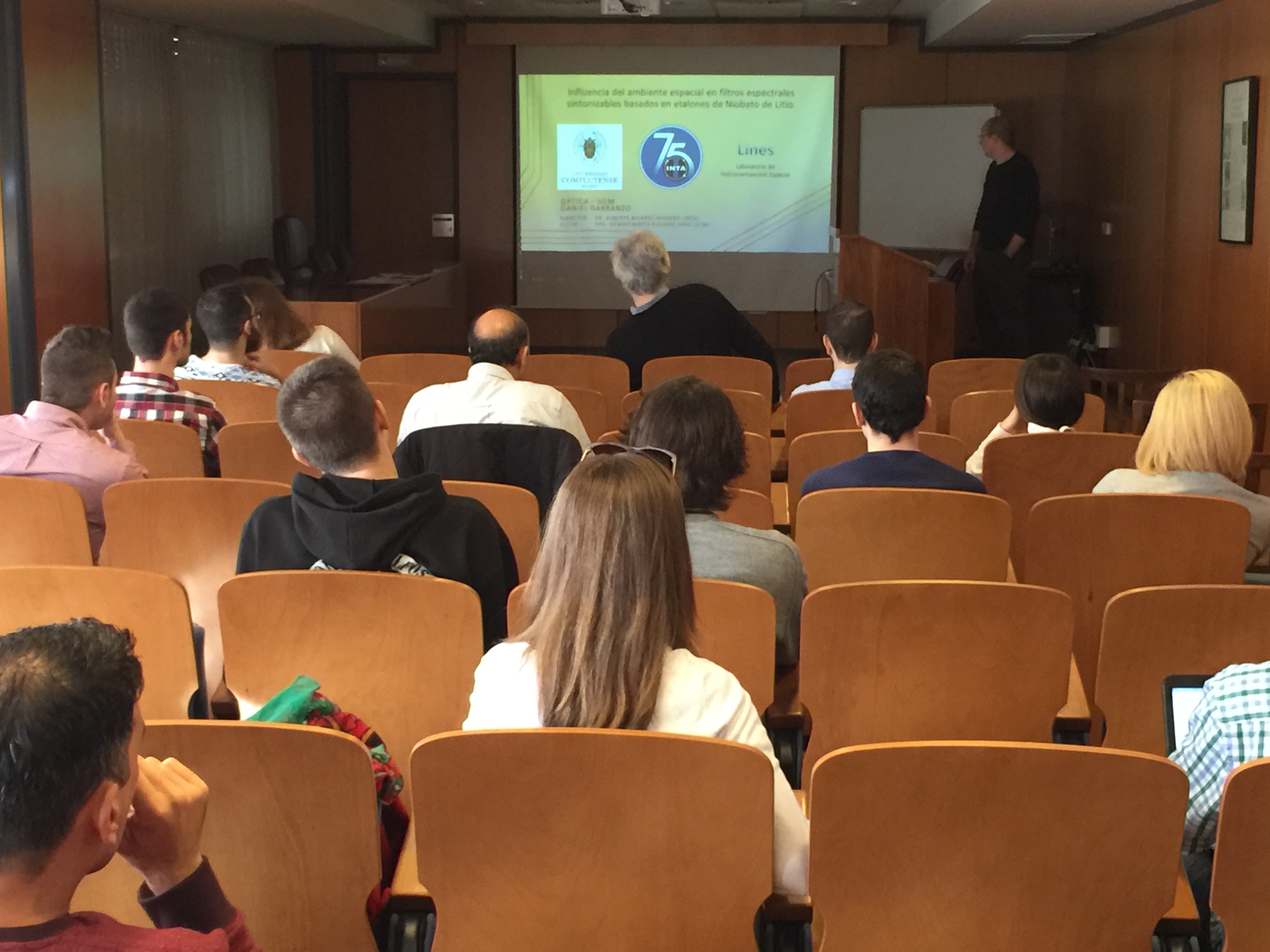|
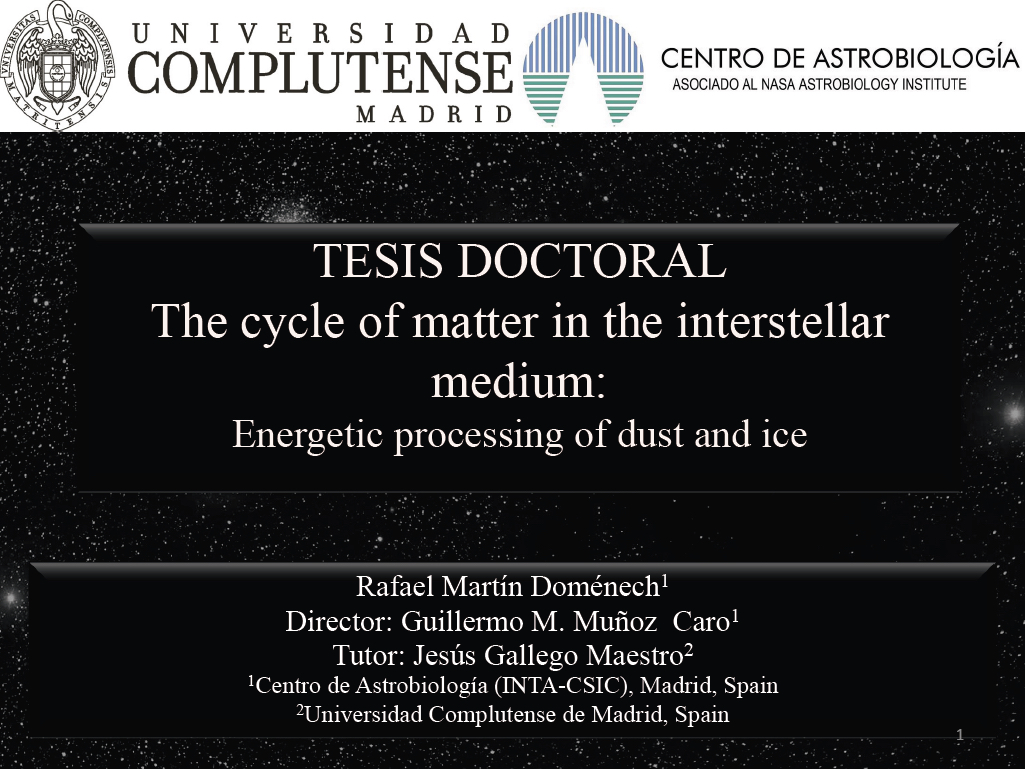
PDF
|
Viernes 17: 12:50 - 13:05
Alumno: Rafael Martín Doménech
Director: Guillermo Manuel Muñoz Caro (Centro de Astrobiología, CAB, INTA-CSIC)
Tutor UCM: Jesús Gallego
Institución: Centro de Astrobiología, CAB, INTA-CSIC
TÍTULO:
El ciclo de la materia en el medio interestelar: fotoprocesado del polvo y el hielo
RESUMEN:
In our Galaxy (and also in other galaxies in the Universe) the space between the stars is not empty. Instead, there is the so-called Interstellar Medium (ISM), that contains ordinary matter in the form of solid particles (dust grains that can be covered by ice mantles in the colder regions) and gas (atoms, molecules, ions and electrons). The work in this thesis represent insights in particular processes that the interstellar matter undergoes during its lifecycle, namely: the energetic processing of dust particles in the translucent clouds; the accretion of ice mantles during the formation of the dense clouds, and their energetic processing; and finally, the thermal processing of these ice mantles during the star formation process.
|
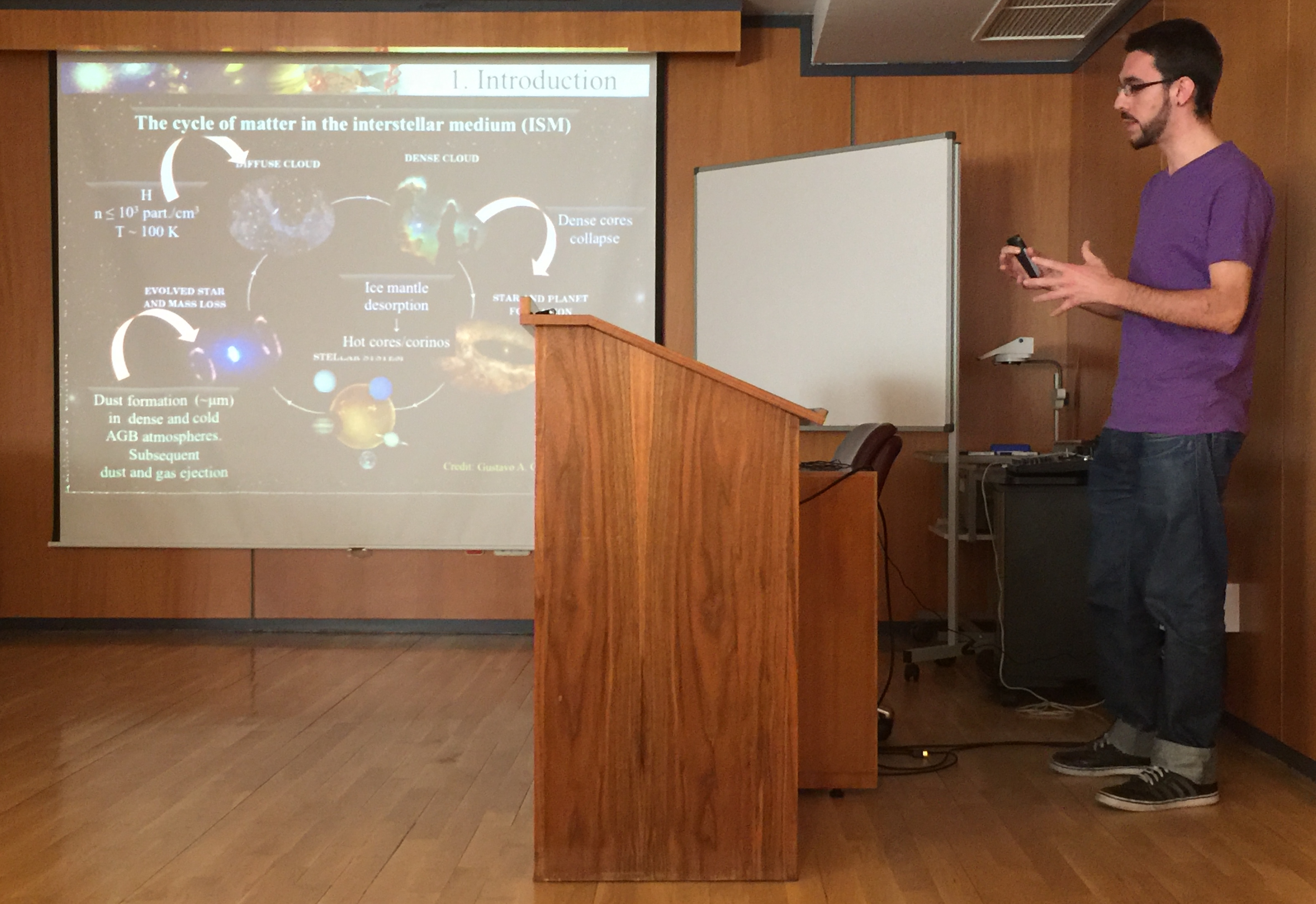
|
|

PDF
|
Viernes 17: 13:10 - 13:25
Alumno: Fernando Pérez López
Director: Michael Küppers (European Space Astronomy Centre, ESAC)
Tutor UCM: Jesús Gallego
Institución: European Space Astronomy Centre, ESAC
TÍTULO:
Physical processes in planetary and cometary atmospheres derived from narrowband imaging of fragment species
RESUMEN:
Comets are the building blocks left over from the formation of the planets in the solar nebula whose structure and composition contains information about the formation conditions and the evolution of the solar system. The Rosetta mission is the first detailed investigation of a comet, in particular the 67P/Churyumov-Gerasimenko comet. The objective of the thesis is to understand the physical processes in the inner coma of the comet through measurements with the OSIRIS scientific camera system (a high-resolution Narrow Angle Camera, NAC, and a Wide Angle Camera, WAC, unit). The main objectives of the thesis will be to understand: the distribution of source species over the nucleus and nucleus homogeneity, the physical and chemical processes creating the emission and the understanding of the gas signal in the NAC observations.
|

|
